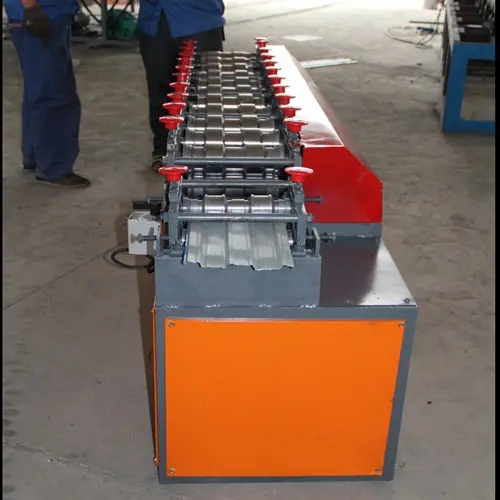
The Significance of W Beam Guard Rails and Their Roll Forming Machines
In the field of highway safety, W beam guard rails play a critical role in protecting both vehicles and pedestrians. These flexible barriers are designed to absorb the impact of a vehicle during accidents, thereby reducing the severity of injuries and potential fatalities. As road networks expand and the demand for safe transport increases, the production of W beam guard rails has become a focus area for manufacturers and engineers alike. One important aspect of this production process is the role of roll forming machines.
Understanding W Beam Guard Rails
W beam guard rails are made from high-strength steel sheets, which are cold-formed into a W-shaped profile. This unique design allows for effective energy absorption during collisions, minimizing damage to both vehicles and occupants. The W shape also aids in redirecting the vehicle back onto the roadway, which is crucial during an unintentional exit. Available in various heights and thicknesses, W beam guard rails can be customized to meet specific roadway requirements, ensuring optimal safety across different environments.
The Role of Roll Forming Machines
To produce W beam guard rails efficiently, manufacturers rely on roll forming machines. These machines are specially designed to shape metal sheets into desired profiles as they pass through a series of rollers. The roll forming process is distinguished by its ability to produce long lengths of uniform profiles while maintaining precision and accuracy, making it the ideal method for mass production of guard rails.
1. Precision and Consistency Roll forming machines provide consistent cross-sectional shapes, ensuring that every piece of guard rail meets strict quality standards. The capacity for high-volume production means that manufacturers can respond effectively to increased demands for safety infrastructure.

2. Material Efficiency The roll forming process generates minimal waste, as the metal sheets are continuously drawn through the rollers without significant cutting. This not only lowers material costs but also minimizes the environmental impact of production.
3. Versatility Modern roll forming machines can be easily adjusted to create different profiles, allowing manufacturers to produce a variety of guard rail designs. This flexibility enables companies to tailor their products to specific regional regulations and customer preferences.
4. Integration of Accessories In addition to forming the guard rails themselves, roll forming machines can also produce complementary components such as posts, brackets, and hardware. This one-stop production approach streamlines the manufacturing process, making it more efficient and cost-effective.
The Future of Roll Forming Technology
As technology continues to advance, the roll forming industry is likely to see significant innovations. Automated roll forming machines equipped with advanced robotics and artificial intelligence can optimize production lines, reduce labor costs, and further enhance precision. Additionally, the integration of Industry 4.0 concepts will allow for real-time monitoring and data collection, ensuring that production metrics are met consistently.
Conclusion
The importance of W beam guard rails in road safety cannot be overstated, and the machines that produce them play an essential role in this safety network. Roll forming machines offer a range of advantages, including precision, efficiency, and versatility, making them indispensable in the manufacturing of guard rail systems. As the demand for safe and reliable road infrastructure continues to grow, it is crucial for manufacturers to invest in advanced technologies that can meet these evolving challenges. With effective production methods and innovative machinery, the future of highway safety looks promising.